Picture the scene. You’re standing in the supermarket, masked up and social distancing while simultaneously trying to figure out if the cereal in your hand that claims to be high in fibre is also loaded in sugar.
If you’ve been that confused consumer, then you’ll welcome the news that food labelling is set to get a revamp.
Wait, another one? Yes, for you astute consumers, it hasn’t been that long since food labelling was reviewed and updated.
In 2014, food labelling got a whole set of new regulations called FIC, which stands for Food Information to Consumers. The regulation was enacted in 2011 but it wasn’t until December 2014 when it was put in action and we started to see it on supermarket shelves. And since, food producers had a lead in time of two years before it was mandatory, it doesn’t feel that long ago since food labelling was the topic du jour.
Yet here we are five years later and things are set to change again. Clodagh Crehan, senior technical executive of the Regulatory Affairs at the Food Safety Authority of Ireland (FSAI) explains. “The European Commission’s Farm to Fork Strategy was published in 2020, working towards a fair, healthy and environmentally sustainable food system. Tackling obesity and encouraging healthier diets is a huge part of that with lots of areas to improve upon, including food labelling.
“There is still a lot of consumer confusion when it comes to labelling, everything from understanding nutritional labels to the difference between ‘use by’ and ‘best before’. This new review is about making things even simpler for the consumer. This is why the FSAI are currently running an online questionnaire which anyone-consumers or business owners can fill out to give their opinion on current food labelling and how they would like it to be presented in the future.”
While this online questionnaire is a good thing for consumers who want their views to be heard, it does require a certain level of knowledge when filling it in. The FSAI have an accompanying explanation document but even that has its fair share of technical jargon. So with the help of Clodagh, we’ve broken down the key points.
There are four areas under review:
1 Front of pack labelling.2 Nutrient profiles.3 Origin labelling.4 Date marking.Pick up one packet of sausages in the supermarket and it has a handy colour-coded label on the front but pick up another and it has none of that detail. How can you do a quick comparison? You can’t because front of pack labelling isn’t mandatory or consistent.
So what exactly is front-of-pack labelling? Turn over your pack and you’ll see there is a nutrition table on the back. This part is mandatory and the label on the front is like a summary guide to help consumers make simpler and quicker informed choices. Do you think this summary label on the front of the pack should be mandatory? This is one of the questions the FSAI would like consumer feedback on.
On top of that, there are different kinds of front of pack labels. In Ireland, we don’t have a set system but many producers use the reference intake label. In the UK, they use the traffic light system which you may also be familiar with, as we import much of our food from the UK. In fact, there are four types of front of pack labels that could be introduced. Here’s what’s on the menu.
Reference intakes
The reference intake label details the energy, fat, saturates, sugar and salt in little bubbles on the front of the pack. It also has percentage reference intakes which means if it says the sugars are 25%, a serving of that food represents one-quarter of your daily allowance of sugar.
It’s a label that consumers may be familiar with as its used on many Irish products. Some people may find it straightforward and like the detail. Others may find it too complicated and would like a simpler option. Is it working for you?
Traffic light labelling
The traffic light label is similar to the reference intakes label, in that it also details the energy, fat, saturates, sugar and salt but it is colour coded. Green means the level is low in that food, orange means medium while red means high. People may like this system as it gives a quick snapshot and draws the eye to the levels you should be watching. Others however, might not like to see red on their food packaging or don’t want to see all those numbers and that level of detail.
Keyhole
The keyhole label is another option and this is visual rather than detailed. This is the front-of-pack label used in the Nordic countries. It takes the overall composition of the food and its nutrient profiles and determines if overall, it is a healthy food or not. In order to get a keyhole label on the front of a food pack it must comply with one or more of these requirements: more wholegrain, less saturated fat, less salt and less sugar. Some consumers like the sound of this as it can make shopping easier – once you see this on the label, you know you’re making a healthier choice. It’s especially appealing if you find the numbers in the previous two options overwhelming. However, it might not appeal to the consumer who likes more detail.
Nutriscore
The easiest way to explain the Nutriscore label is to compare it to the BER on your house.
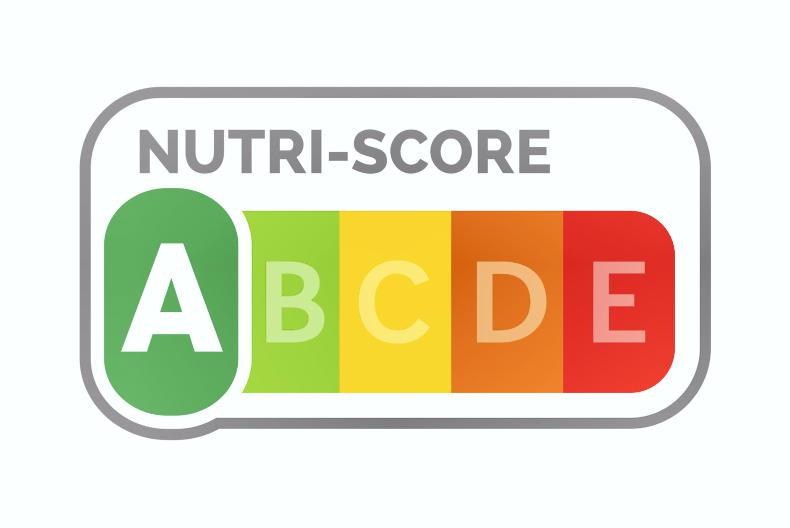
Just like in your home, when A means warm and toasty, on the food label it means healthy and nutritious. C is somewhere in the middle, it could mean low in sugar but high in salt. E is like the house that has a breezy draft and no insulation-in short, not the best choice. The letters are also colour coded from green to red.
This is also a summary label and doesn’t have the level of detail presented in the first two options. Again, this suits the consumer who doesn’t want to be bogged down in detail but it gives more information than the keyhole label.
The next area that is under review is nutrient profiles. Currently, a food manufacturer can make a claim on a food product provided it meets the criteria. For example, a breakfast cereal can have big shiny writing on its packaging stating its high in fibre because it ticked all the boxes when it comes to high-fibre criteria.
You as a consumer then buy the cereal believing it’s good for your diet. However, when you bring it home, you find its loaded with sugar and not exactly the healthy option you thought it to be. When it comes to food labelling, this is a very grey area.
An overhaul of nutrient profiles is needed to help consumers make better choices. Ideally, only food products that have genuine nutritional benefit in terms of their overall composition will be allowed to make claims.
However, it’s a tricky one-finding the right equation which allows for claims to be made. This will require a lot of work and consultation.
Origin labelling is an area that many consumers are opinionated about. There has certainly been improvements in recent years but further work is needed.
The origin of beef on labels has been in place for a long time, since 2000. Origin labelling for cuts of chicken, pork, sheep and goat came into effect in 2013. Then in 2018, the application of source of origin for the primary ingredient of a food came into effect.
For example, if you buy a ready meal such as chicken curry and there is an Irish flag on it or it gives an indication that it is Irish, that is fine if it contains Irish chicken. It doesn’t need to tell us anything else. If, however, the chicken comes from Thailand, the product needs to state that, in the same field of vision where it is claiming to be Irish. It is hoped that the legislation will hone this even further and apply it to products like dairy, tomatoes, potatoes, and pasta. Remember this is EU wide so the Italians don’t want sauce being labelled as Italian if it isn’t using Italian tomatoes.
Similarly, we don’t want to see a cheesecake claiming to use the best of Irish ingredients if it isn’t using Irish milk. The questionnaire is asking how you would like to see origin labelling represented on food labels.
What’s the difference between use-by and best before? If you are one of the many consumers who gets confused by this question, then you need to make your voice heard so that changes can be made on food labelling.
Use by is on the label for safety reasons. Food that has passed its use by date is not safe to consume and this is found on perishable foods such as dairy or meat, Best before, however, refers to the quality of the food. It usually tastes best when consumed before the date on the label. However, when stored correctly, it can still be fine to eat. Take a packet of biscuits. If this is sealed and stored correctly, then it can still be safe to eat after the best before. Food waste is a big part of the Farm to Fork Strategy and so they are looking at what changes can be made in this regard. One option is to get rid of best before dates altogether, and just have use by dates. Another option is to give a better description on the label about what best before means. For example, it could read “Best before March 2021. Often good after April 2021.” Or maybe it should read: “Best served before March 2021”.
Or do you as a consumer think it is very straightforward and there is no need to change things? This is where you can have your stay.
Have your say
You can fill in the questionnaire at www.fsai.ie/legislation/consultations.html. The consultation is open until 25 March 2021 and the Department of Health is keen to secure food businesses’ and consumers’ viewpoints.
Picture the scene. You’re standing in the supermarket, masked up and social distancing while simultaneously trying to figure out if the cereal in your hand that claims to be high in fibre is also loaded in sugar.
If you’ve been that confused consumer, then you’ll welcome the news that food labelling is set to get a revamp.
Wait, another one? Yes, for you astute consumers, it hasn’t been that long since food labelling was reviewed and updated.
In 2014, food labelling got a whole set of new regulations called FIC, which stands for Food Information to Consumers. The regulation was enacted in 2011 but it wasn’t until December 2014 when it was put in action and we started to see it on supermarket shelves. And since, food producers had a lead in time of two years before it was mandatory, it doesn’t feel that long ago since food labelling was the topic du jour.
Yet here we are five years later and things are set to change again. Clodagh Crehan, senior technical executive of the Regulatory Affairs at the Food Safety Authority of Ireland (FSAI) explains. “The European Commission’s Farm to Fork Strategy was published in 2020, working towards a fair, healthy and environmentally sustainable food system. Tackling obesity and encouraging healthier diets is a huge part of that with lots of areas to improve upon, including food labelling.
“There is still a lot of consumer confusion when it comes to labelling, everything from understanding nutritional labels to the difference between ‘use by’ and ‘best before’. This new review is about making things even simpler for the consumer. This is why the FSAI are currently running an online questionnaire which anyone-consumers or business owners can fill out to give their opinion on current food labelling and how they would like it to be presented in the future.”
While this online questionnaire is a good thing for consumers who want their views to be heard, it does require a certain level of knowledge when filling it in. The FSAI have an accompanying explanation document but even that has its fair share of technical jargon. So with the help of Clodagh, we’ve broken down the key points.
There are four areas under review:
1 Front of pack labelling.2 Nutrient profiles.3 Origin labelling.4 Date marking.Pick up one packet of sausages in the supermarket and it has a handy colour-coded label on the front but pick up another and it has none of that detail. How can you do a quick comparison? You can’t because front of pack labelling isn’t mandatory or consistent.
So what exactly is front-of-pack labelling? Turn over your pack and you’ll see there is a nutrition table on the back. This part is mandatory and the label on the front is like a summary guide to help consumers make simpler and quicker informed choices. Do you think this summary label on the front of the pack should be mandatory? This is one of the questions the FSAI would like consumer feedback on.
On top of that, there are different kinds of front of pack labels. In Ireland, we don’t have a set system but many producers use the reference intake label. In the UK, they use the traffic light system which you may also be familiar with, as we import much of our food from the UK. In fact, there are four types of front of pack labels that could be introduced. Here’s what’s on the menu.
Reference intakes
The reference intake label details the energy, fat, saturates, sugar and salt in little bubbles on the front of the pack. It also has percentage reference intakes which means if it says the sugars are 25%, a serving of that food represents one-quarter of your daily allowance of sugar.
It’s a label that consumers may be familiar with as its used on many Irish products. Some people may find it straightforward and like the detail. Others may find it too complicated and would like a simpler option. Is it working for you?
Traffic light labelling
The traffic light label is similar to the reference intakes label, in that it also details the energy, fat, saturates, sugar and salt but it is colour coded. Green means the level is low in that food, orange means medium while red means high. People may like this system as it gives a quick snapshot and draws the eye to the levels you should be watching. Others however, might not like to see red on their food packaging or don’t want to see all those numbers and that level of detail.
Keyhole
The keyhole label is another option and this is visual rather than detailed. This is the front-of-pack label used in the Nordic countries. It takes the overall composition of the food and its nutrient profiles and determines if overall, it is a healthy food or not. In order to get a keyhole label on the front of a food pack it must comply with one or more of these requirements: more wholegrain, less saturated fat, less salt and less sugar. Some consumers like the sound of this as it can make shopping easier – once you see this on the label, you know you’re making a healthier choice. It’s especially appealing if you find the numbers in the previous two options overwhelming. However, it might not appeal to the consumer who likes more detail.
Nutriscore
The easiest way to explain the Nutriscore label is to compare it to the BER on your house.

Just like in your home, when A means warm and toasty, on the food label it means healthy and nutritious. C is somewhere in the middle, it could mean low in sugar but high in salt. E is like the house that has a breezy draft and no insulation-in short, not the best choice. The letters are also colour coded from green to red.
This is also a summary label and doesn’t have the level of detail presented in the first two options. Again, this suits the consumer who doesn’t want to be bogged down in detail but it gives more information than the keyhole label.
The next area that is under review is nutrient profiles. Currently, a food manufacturer can make a claim on a food product provided it meets the criteria. For example, a breakfast cereal can have big shiny writing on its packaging stating its high in fibre because it ticked all the boxes when it comes to high-fibre criteria.
You as a consumer then buy the cereal believing it’s good for your diet. However, when you bring it home, you find its loaded with sugar and not exactly the healthy option you thought it to be. When it comes to food labelling, this is a very grey area.
An overhaul of nutrient profiles is needed to help consumers make better choices. Ideally, only food products that have genuine nutritional benefit in terms of their overall composition will be allowed to make claims.
However, it’s a tricky one-finding the right equation which allows for claims to be made. This will require a lot of work and consultation.
Origin labelling is an area that many consumers are opinionated about. There has certainly been improvements in recent years but further work is needed.
The origin of beef on labels has been in place for a long time, since 2000. Origin labelling for cuts of chicken, pork, sheep and goat came into effect in 2013. Then in 2018, the application of source of origin for the primary ingredient of a food came into effect.
For example, if you buy a ready meal such as chicken curry and there is an Irish flag on it or it gives an indication that it is Irish, that is fine if it contains Irish chicken. It doesn’t need to tell us anything else. If, however, the chicken comes from Thailand, the product needs to state that, in the same field of vision where it is claiming to be Irish. It is hoped that the legislation will hone this even further and apply it to products like dairy, tomatoes, potatoes, and pasta. Remember this is EU wide so the Italians don’t want sauce being labelled as Italian if it isn’t using Italian tomatoes.
Similarly, we don’t want to see a cheesecake claiming to use the best of Irish ingredients if it isn’t using Irish milk. The questionnaire is asking how you would like to see origin labelling represented on food labels.
What’s the difference between use-by and best before? If you are one of the many consumers who gets confused by this question, then you need to make your voice heard so that changes can be made on food labelling.
Use by is on the label for safety reasons. Food that has passed its use by date is not safe to consume and this is found on perishable foods such as dairy or meat, Best before, however, refers to the quality of the food. It usually tastes best when consumed before the date on the label. However, when stored correctly, it can still be fine to eat. Take a packet of biscuits. If this is sealed and stored correctly, then it can still be safe to eat after the best before. Food waste is a big part of the Farm to Fork Strategy and so they are looking at what changes can be made in this regard. One option is to get rid of best before dates altogether, and just have use by dates. Another option is to give a better description on the label about what best before means. For example, it could read “Best before March 2021. Often good after April 2021.” Or maybe it should read: “Best served before March 2021”.
Or do you as a consumer think it is very straightforward and there is no need to change things? This is where you can have your stay.
Have your say
You can fill in the questionnaire at www.fsai.ie/legislation/consultations.html. The consultation is open until 25 March 2021 and the Department of Health is keen to secure food businesses’ and consumers’ viewpoints.




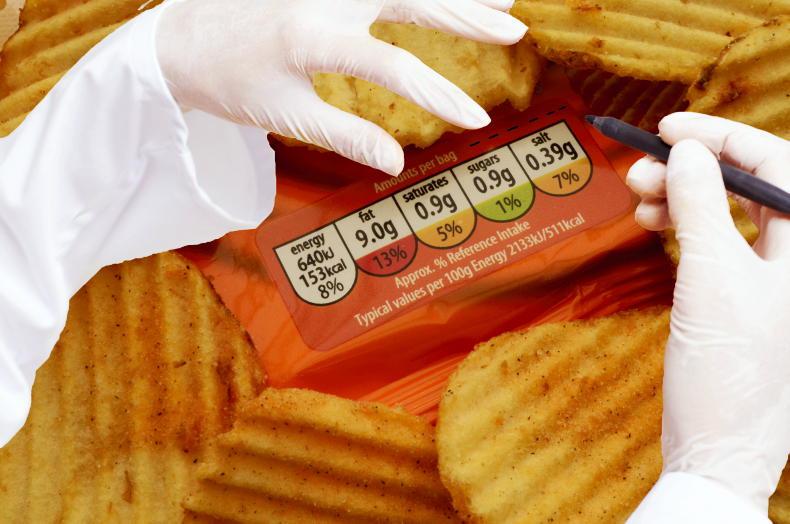


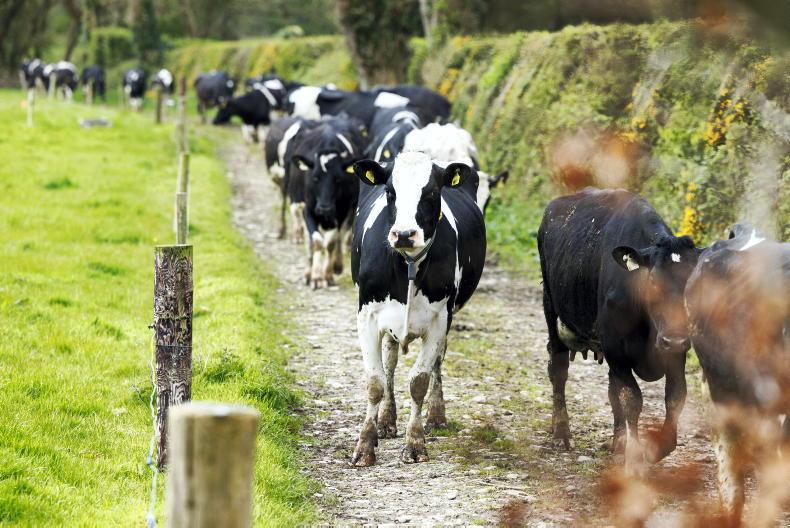
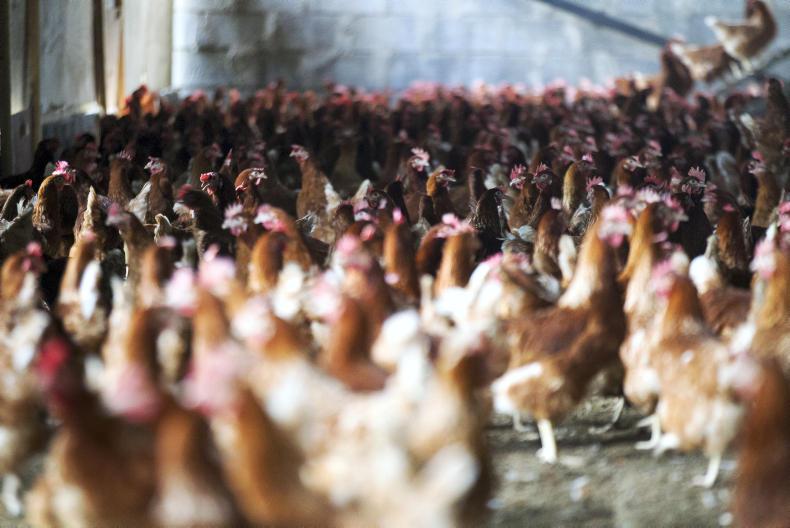
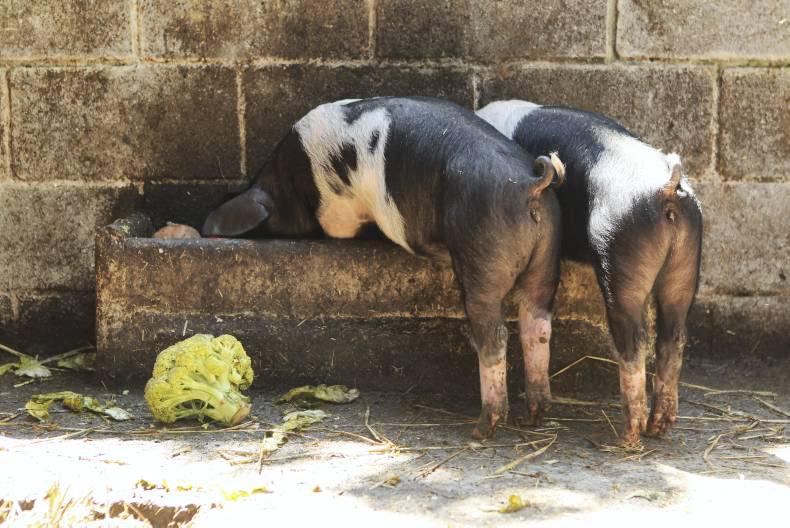
SHARING OPTIONS